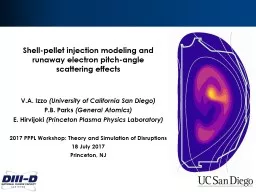PPT-Large-scale shell-model study of
Author : mitsue-stanley | Published Date : 2017-05-15
E 1 strength function and level density Yutaka Utsuno Advanced Science Research Center Japan Atomic Energy Agency Center for Nuclear Study University of Tokyo
Presentation Embed Code
Download Presentation
Download Presentation The PPT/PDF document "Large-scale shell-model study of" is the property of its rightful owner. Permission is granted to download and print the materials on this website for personal, non-commercial use only, and to display it on your personal computer provided you do not modify the materials and that you retain all copyright notices contained in the materials. By downloading content from our website, you accept the terms of this agreement.
Large-scale shell-model study of: Transcript
Download Rules Of Document
"Large-scale shell-model study of"The content belongs to its owner. You may download and print it for personal use, without modification, and keep all copyright notices. By downloading, you agree to these terms.
Related Documents














